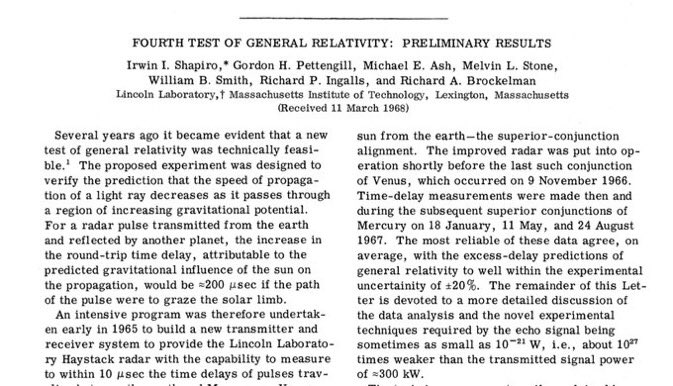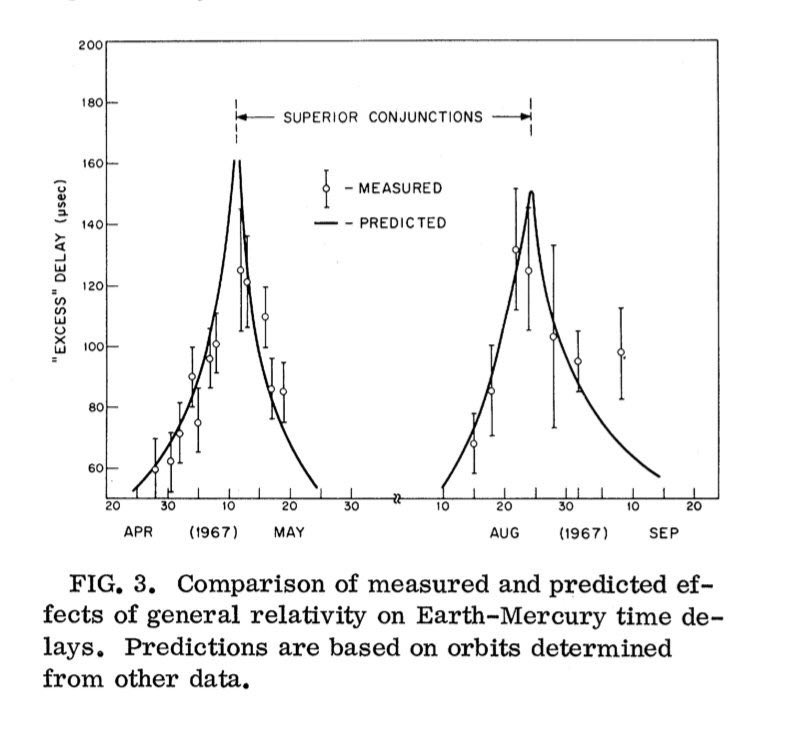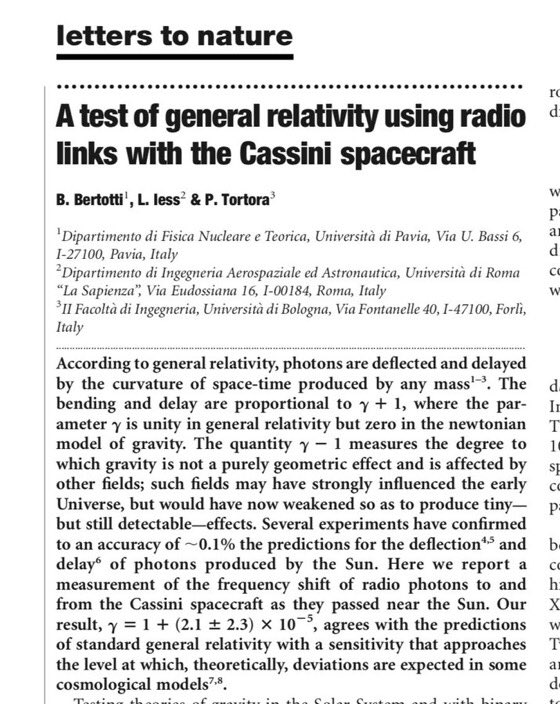When Einstein proposed general relativity he laid out three tests: the precession of Mercury& #39;s perihelion, deflection of light by the sun, and gravitational redshift. Irwin Shapiro proposed a fourth test #OTD in 1964: the gravitational time delay of light. https://journals.aps.org/prl/abstract/10.1103/PhysRevLett.13.789">https://journals.aps.org/prl/abstr...
It& #39;s a simple idea: The round-trip time of a radio signal bounced off a distant object increases a little if it passes through the gravitational field of a massive object along the way.
Image: Simon Tyran, via @BeCurieus
https://en.wikipedia.org/wiki/File:Shapiro_delay.gif">https://en.wikipedia.org/wiki/File...
Image: Simon Tyran, via @BeCurieus
https://en.wikipedia.org/wiki/File:Shapiro_delay.gif">https://en.wikipedia.org/wiki/File...
Shapiro estimated that signals bounced off Venus or Mercury at superior conjunction, when they are on the opposite side of the sun from Earth, would experience a delay of about 200 microseconds due to the Sun& #39;s gravitational field. This was measurable at the time!
Shapiro et al tested the idea in 1966-67, first with Venus and then with Mercury, at MIT& #39;s Lincoln Laboratory Haystack radar site. The results agreed with the predictions of general relativity to well within the expected uncertainties.
https://journals.aps.org/prl/abstract/10.1103/PhysRevLett.20.1265">https://journals.aps.org/prl/abstr...
https://journals.aps.org/prl/abstract/10.1103/PhysRevLett.20.1265">https://journals.aps.org/prl/abstr...
The result has since been refined by measuring the effect with distant space probes. In 2003, Bertotti, Iess, and Tortoran used a signal sent to and from @CassiniSaturn to confirm the predictions of GR with an accuracy of 20 parts per million.
https://www.nature.com/articles/nature01997">https://www.nature.com/articles/...
https://www.nature.com/articles/nature01997">https://www.nature.com/articles/...
Whoops, forgot the #TeamRadar hashtag for my radar friends.

 Read on Twitter
Read on Twitter





